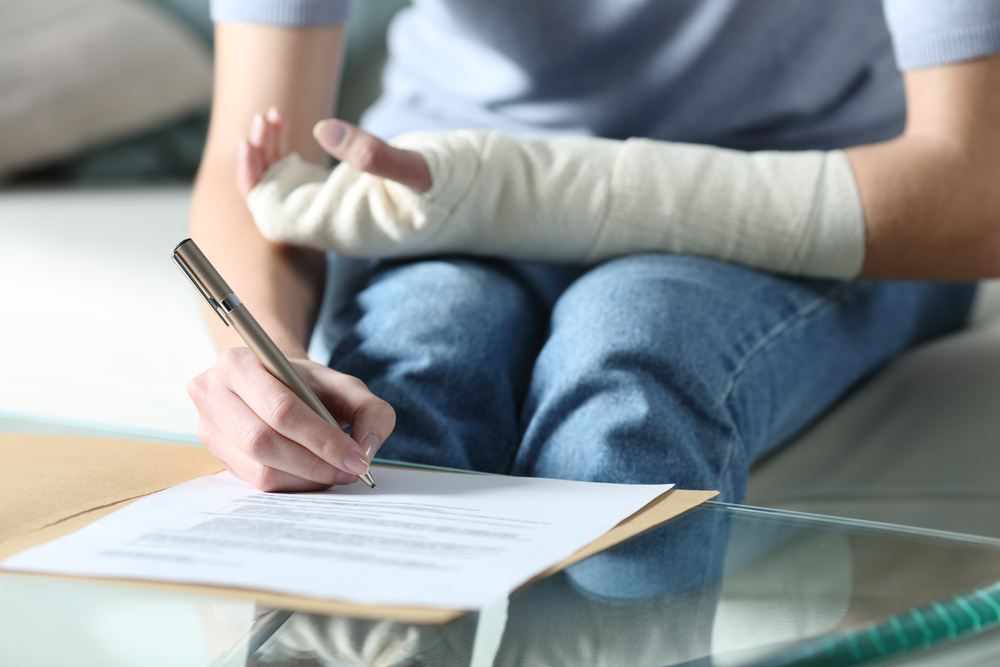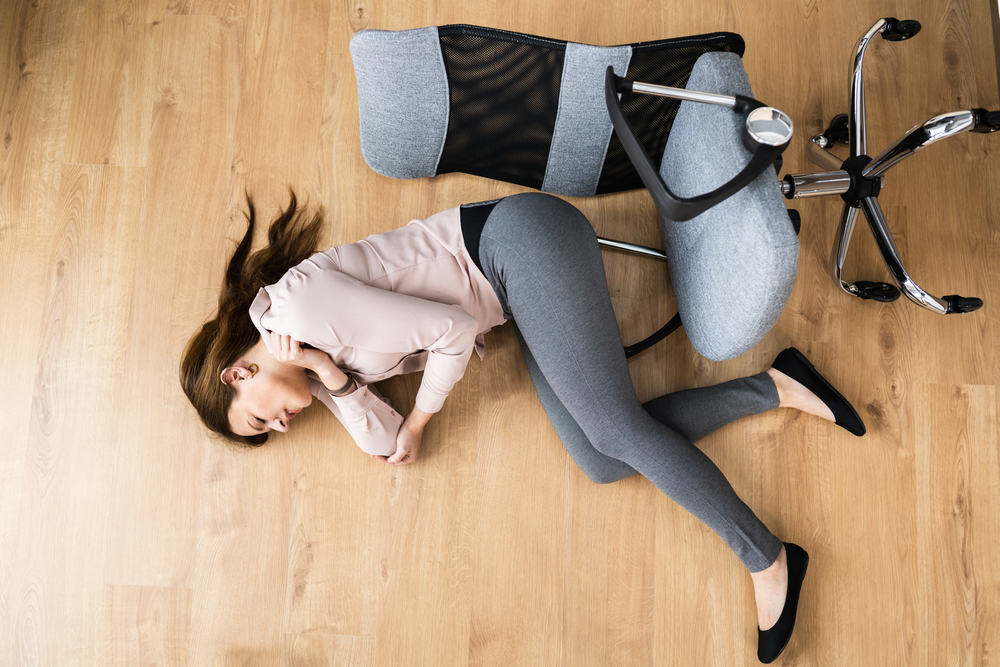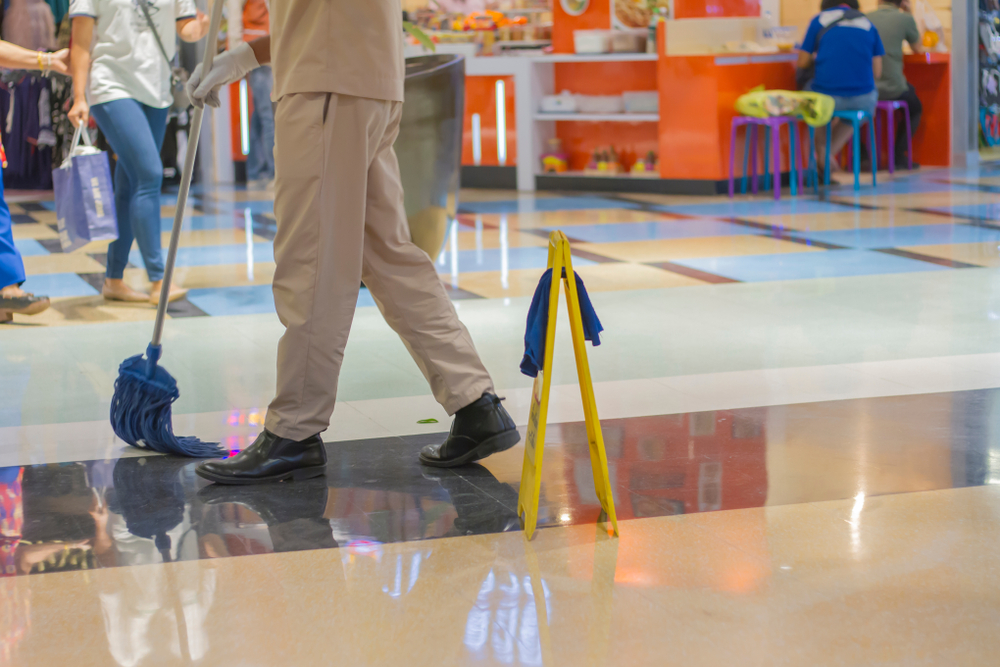
How to Document a Slip and Fall Injury for a Claim
Step-by-step guide to documenting your California slip and fall for a stronger injury claim
Start With Safety
Experiencing a slip and fall accident in California can be unsettling, both physically and emotionally. Your first priority is always your health and safety. If you are injured, seek medical attention right away. But once you are safe, documenting every aspect of your slip and fall injury can make a significant difference in your personal injury claim. Careful documentation is one of the best ways to protect your rights and improve your chances of fair compensation under California law.
Accidents like these happen in many environments, from grocery stores to public sidewalks. Understanding how to document your case is crucial, just as knowing about premises liability and the responsibilities of property owners in California is important.
Know the Basics
A slip and fall injury occurs when you lose your footing or trip due to a hazardous condition. These incidents are common, but proving liability often depends on the quality of your documentation. The more details and evidence you have, the stronger your claim.
California’s personal injury laws place the burden on you to show that the property owner was negligent. That means the owner either created the danger, knew about it and didn’t fix it, or should have known about it.
California Laws to Remember
California law requires property owners to maintain safe premises. Under California Civil Code § 1714, everyone is responsible for injuries caused by their lack of ordinary care. This is the backbone of slip and fall claims in the state.
If you’re injured because of a dangerous condition, you must prove:
- The property owner (or occupier) owed you a duty of care
- They breached that duty by failing to fix or warn about the hazard
- The breach directly caused your injuries
Timing is important. In California, you generally have two years from the date of your fall to file a claim. Waiting too long could mean losing your right to compensation. For more on injury timelines, visit Understanding Compensation in Wrongful Death Lawsuits.
Gather Immediate Evidence
Right after a slip and fall, evidence is fresh and memories are clear. Here’s what to do:
- Take photos: Capture the scene, the hazard (like a wet floor), and your injuries.
- Get witness information: Ask for names and contact numbers of anyone who saw your fall.
- Report the incident: Notify the property manager or owner, and ask for a copy of the incident report.
If the fall happened in a public place or at work, these steps help establish a record. For related workplace incidents, see Wage and Hour Disputes in California.
Photograph the Scene
Photos are powerful. Use your phone to take clear, wide shots of:
- The exact spot where you fell
- The hazard (spilled liquid, uneven flooring, debris)
- Warning signs (or lack of them)
- Lighting conditions
- Your visible injuries (bruises, cuts, bandages)
Be thorough. These images can make or break your claim, especially if the property owner corrects the hazard soon after.
Secure Accident Reports
If your fall occurred at a business or public property, ask for an official incident report. This document should include:
- Date, time, and location
- Description of the accident
- Names and statements of witnesses
- Property owner or manager’s comments
Be sure to request a copy for your own records. This report will support your account and is valuable if you need to pursue a premises liability claim.
Collect Witness Statements
Witnesses provide crucial third-party perspectives. Ask anyone who saw the accident if they’d be willing to give a written or recorded statement. Key details to gather include:
- Name and contact information
- Their description of what happened
- Observations about the hazard
- Whether they noticed any warning signs
Having witness support can strengthen your position if the property owner disputes your version of events. For more on proving fault, see Proving Liability in Slip and Fall Cases.
Document Your Injuries
Keep detailed notes on your injuries and their progression. Include:
- What hurts and where
- When pain started and how it has changed
- All medical diagnoses and treatments
Take photos of visible injuries throughout your recovery. These records help show the impact of the fall on your daily life, which is vital for your personal injury claim.
Save All Medical Records
Medical documentation is the foundation of your injury claim. Hold on to:
- Doctor’s notes and diagnoses
- X-rays, MRIs, or other scans
- Prescriptions and receipts
- Treatment plans and follow-up instructions
- Hospital discharge papers
Organize these documents chronologically. If you need to prove the seriousness of your injuries, these records will be key.
Track Expenses and Losses
A slip and fall can lead to significant financial losses. Track:
- Medical bills
- Prescription costs
- Lost wages from missed work
- Transportation costs to and from appointments
- Any home modifications or support services
Documenting these out-of-pocket expenses helps you seek proper compensation. For an overview of damages in California, visit Common Premises Liability Injuries and Compensation.
Keep a Personal Injury Journal
Start a daily journal after your accident. Record:
- Your pain levels and symptoms
- Emotional impact (stress, anxiety, sleeplessness)
- Activities you can no longer do
- How the injury affects your work, home, or family life
A journal shows how the injury has changed your routine and can be powerful evidence in negotiations or court.
Watch for Insurance Contact
Insurance companies may contact you soon after your fall. Be careful:
- Do not give recorded statements without legal advice
- Don’t sign anything or accept offers before understanding your rights
- Save all correspondence with insurers
Insurance adjusters may look for ways to limit or deny your claim. For tips on dealing with insurers, review How to Prove Negligence in a Wrongful Death Case, which also covers evidence gathering.
Consult a California Attorney
Slip and fall claims in California can be complex. An experienced personal injury attorney can help you:
- Review your documentation and evidence
- Identify additional sources of compensation
- Handle communications with insurance companies
- File your claim within the required timeline
If you want to know more about your options, explore Common Damages in Wrongful Termination Lawsuits and Steps to Take After a Dog Bite Injury.
Don’t Wait Too Long
Evidence fades, memories blur, and hazards get fixed. The sooner you gather and organize your documentation, the better your chances of success. California’s two-year rule for filing claims is strict, so don’t delay.
If you’re unsure what to do next, or if your claim is being challenged, reaching out to a lawyer familiar with premises liability in California can make a real difference.
Closing: We’re Here to Help
Documenting your slip and fall injury is essential to protecting your rights and building a strong case. If you need guidance or want to discuss your claim, call Attain Law at (888) 970-8627 or contact us today for a free consultation. We’re here to support you every step of the way.
Frequently Asked Questions about Documenting Slip and Fall Injuries in California
What should I photograph after a slip and fall in California? Take clear photos of the accident scene, the hazard that caused your fall, any visible injuries, and the surrounding area. Capture wide shots and close-ups for thorough documentation.
How soon should I report a slip and fall accident in California? Report the incident to the property owner or manager as soon as possible, preferably immediately. Request a copy of the incident report for your records.
What paperwork is important for my slip and fall claim? Keep all medical records, bills, witness statements, incident reports, and any correspondence with insurance companies. Organize these documents chronologically.
Can I use witness statements in my California slip and fall claim? Yes, witness statements can provide independent accounts of your accident, helping to establish liability and support your version of events.
Why is a personal injury journal useful in California slip and fall cases? A daily journal tracks your symptoms, pain, and the impact on your daily life. This record helps demonstrate the severity and ongoing effects of your injuries.
Disclaimer: This is an advertisement. The information provided is for general purposes only and is not legal advice. Consult a qualified attorney for your specific case. Attain Law cannot guarantee outcomes, as results vary by situation.
Browse Other Articles for "Slip and Fall" in California:
Start Your FREE Consultation
Complete the form for a Free Consultation. No upfront fees, swift action, and we’re only paid when we succeed for you.
Why Choose Attain Law?
- No Upfront Costs
- We operate on a contingency fee basis—you pay nothing unless we win your case.
- Personalized Attention
- Every case is unique. We tailor our strategies to fit your specific situation.
- Proven Track Record
- Our firm has successfully recovered millions for our clients.
- Statewide Representation
- Based in Woodland Hills, we serve clients throughout California.
Justice Is One Step Away
Ready to turn your struggle into strength? At Attain Law, we’re here to take on your fight—whether it’s a car accident, a dangerous drug, or a workplace injury gone wrong. One call starts it all, and we’re with you every step, no upfront cost required.
- Free Case Review
- No Fees Until Victory
- Millions Recovered
- Personal Strategy
- California Coverage
- Relentless Case Pursuit


